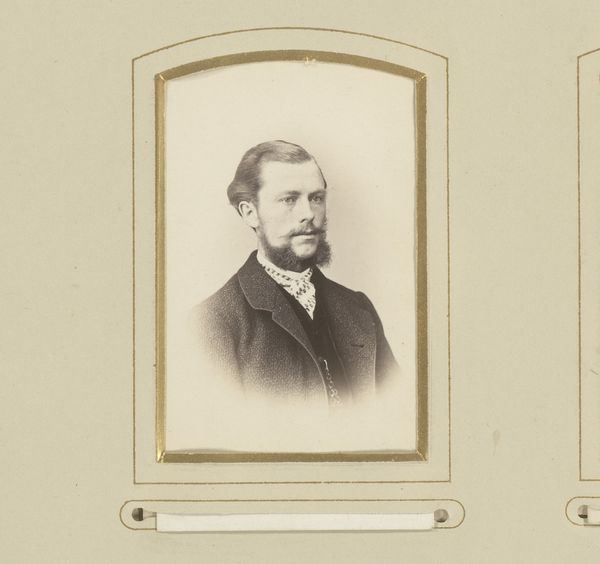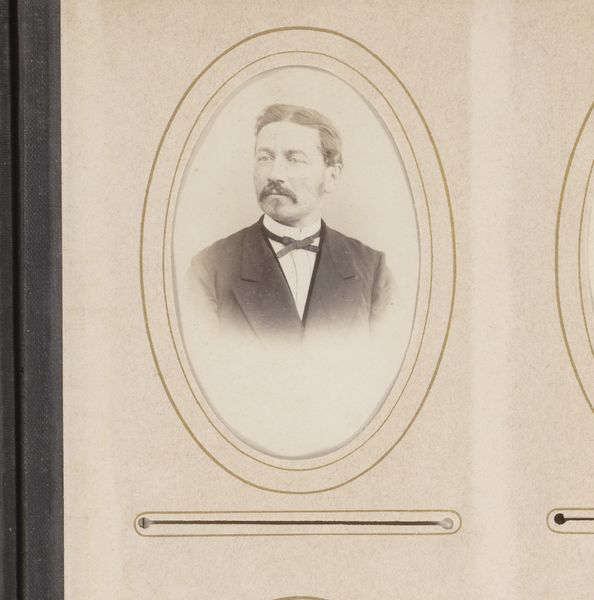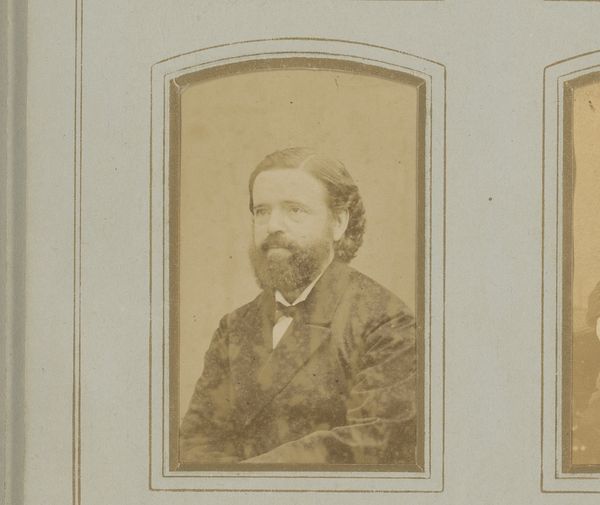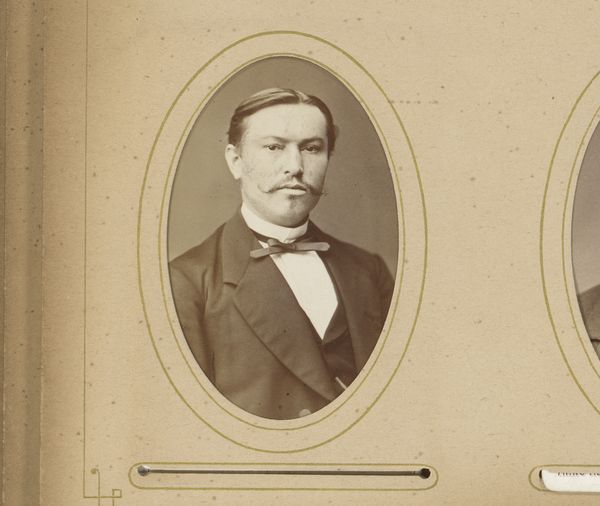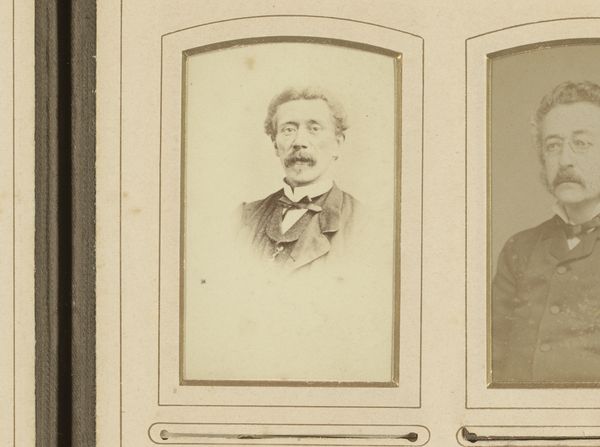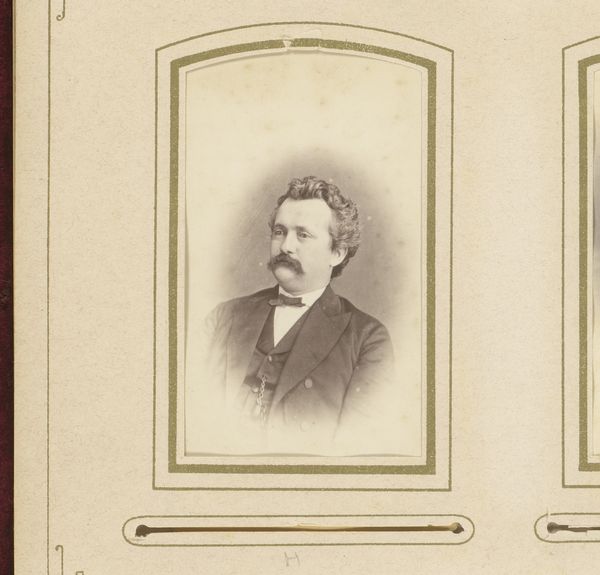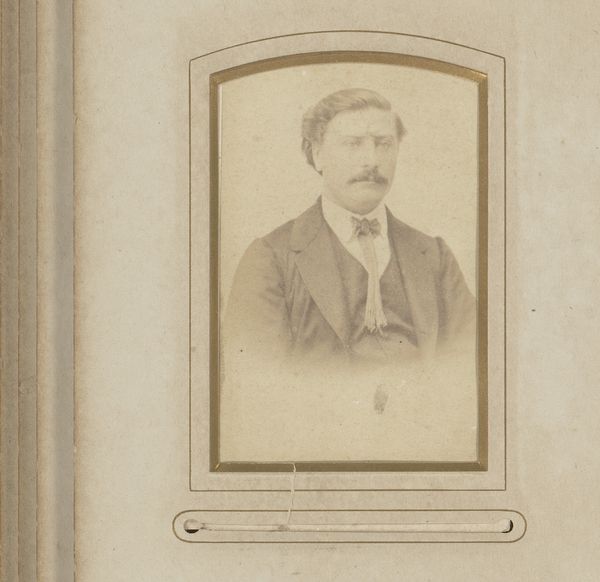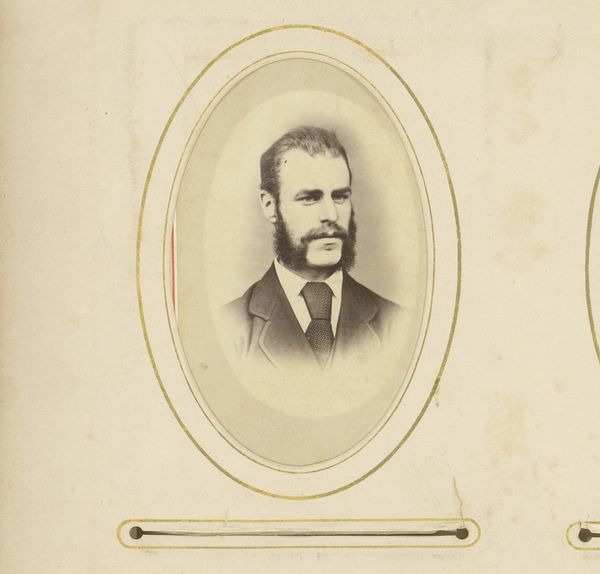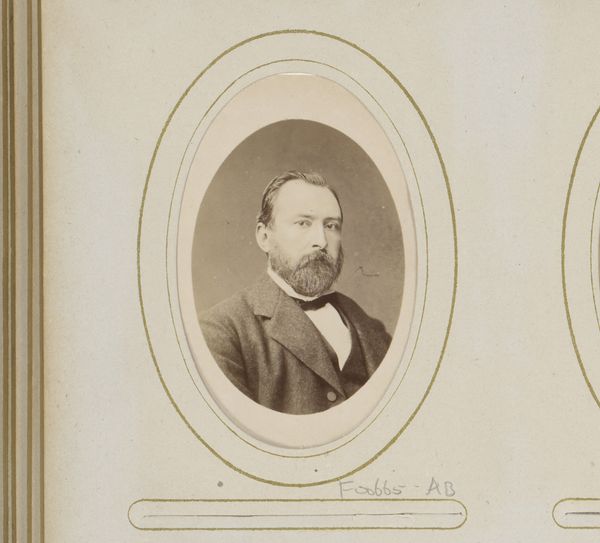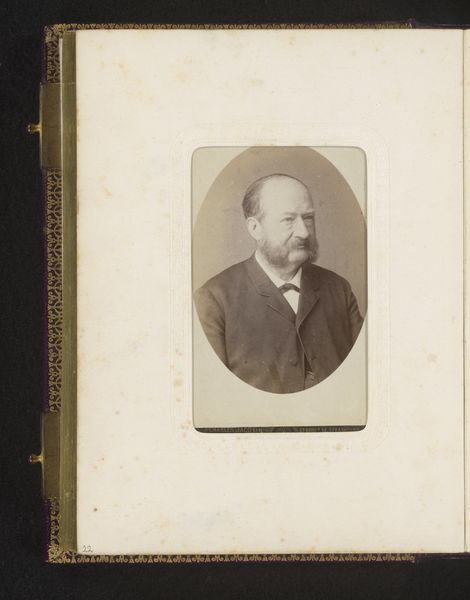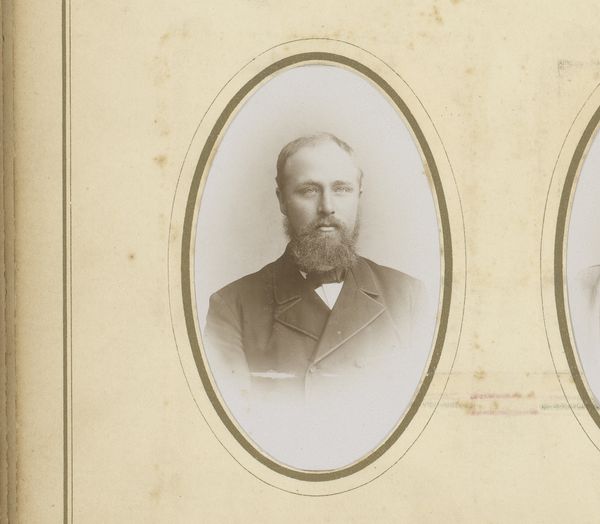
photography, gelatin-silver-print
#
portrait
#
aged paper
#
toned paper
#
photography
#
historical photography
#
portrait reference
#
brown and beige
#
yellow element
#
gelatin-silver-print
#
warm-toned
#
portrait drawing
#
yellow accent
#
realism
#
gold element
Dimensions: height 81 mm, width 52 mm
Copyright: Rijks Museum: Open Domain
Curator: I’m struck by the quiet solemnity of this gelatin-silver print, an aging photograph from the late 19th century. Editor: Indeed. Here we have what is known as “Portret van een man met hoofddeksel,” dating from somewhere between 1876 and 1900. It’s currently housed in the Rijksmuseum. The subject has been identified as Friedrich Julius von Kolkow. Curator: The sepia tones evoke such a strong sense of nostalgia. There’s something so immediate and present in these portraits of unnamed men from the past, as they reflect back toward our own notions of masculinity and male identity. Editor: Note the stark geometry of the oval frame around the subject and its visual relationship to the rectangular paper format itself; it’s almost as if the artist used shape alone to achieve spatial and visual balance within the piece. Curator: It raises questions of representation, though, doesn’t it? The anonymous sitter – von Kolkow aside – is styled in a specific manner, positioned within the complex social and economic structure of the era, even if the specifics of that world are obfuscated. What about the choices around what to show and what to conceal about a person and his place within the cultural moment? Editor: Precisely! This play with what's evident versus obscure is essential to interpreting any image from that time. Take, for example, the almost perfect tonal range visible, with subtle gradations making visible the delicate contours of the face, balanced against his darkened headwear. Curator: Right – and as viewers, our position is not neutral. We are implicated in the image and its potential political impact just by looking, thinking about issues of class, privilege, gendered notions about appearance, the burdens or lack thereof associated with this identity during that particular period of time… Editor: I appreciate how your insights invite viewers to consider art history alongside theory. In closing, I believe that careful attention to compositional elements encourages greater insights into what such portraits ultimately reveal, in concert with sociopolitical frameworks of understanding. Curator: Agreed. Let us use our view as a framework for asking ourselves those hard questions about history.
Comments
No comments
Be the first to comment and join the conversation on the ultimate creative platform.
